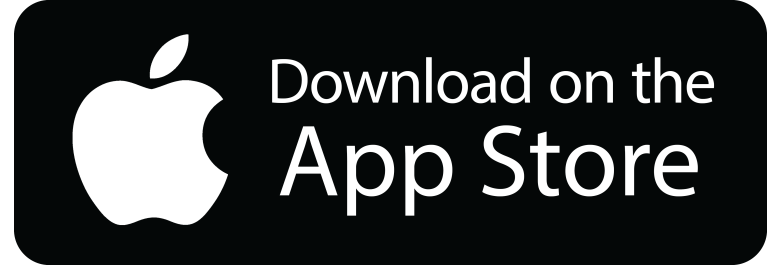Understanding the Role of Specificity in Pitch Decks
When it comes to pitching your business idea, being specific is key. Investors want to see that you have a deep understanding of your market, target audience, and the problem you aim to solve. By clearly articulating these specific details, you demonstrate that you have done your homework and have a well-thought-out plan.
Specificity adds weight to your pitch, helping investors understand the potential impact and scalability of your venture. It enables them to assess the feasibility and market potential of your business, increasing their confidence in your ability to execute your vision.
For example, let's say you're pitching a new mobile app that helps people track their daily water intake. Being specific would involve providing data on the size of the market for health and wellness apps, the demographics of your target audience, and the specific problem of dehydration that your app addresses. These details help investors see the potential market reach and the unique value proposition of your product.
Furthermore, specificity allows you to showcase your expertise and knowledge in your industry. By diving deep into the specifics, you can demonstrate that you understand the competitive landscape, the current challenges faced by similar apps, and how your solution stands out from the rest. This level of detail not only instills confidence in investors but also positions you as a credible and knowledgeable entrepreneur.
The Power of Precision in Investor Communication
Precision in investor communication is crucial. Avoid vague statements or sweeping generalisations that lack substance. Specify the market size, target demographics, and the unique value proposition of your product or service. Paint a clear picture of the problem you aim to solve, making it tangible and relatable.
Let's continue with the example of the water intake tracking app. Instead of simply stating that your app helps people stay hydrated, you can provide precise data on the number of people who suffer from dehydration-related health issues and the potential cost savings for healthcare systems if more people were adequately hydrated. By using precise language, you show that you have a deep understanding of your industry, competitors, and the challenges you're up against. It instills confidence in investors and positions you as a credible and knowledgeable entrepreneur.
How Specificity Influences Investor Decisions
Investors are constantly evaluating multiple opportunities and seeking a compelling reason to invest. Being specific in your pitch deck helps you stand out from the crowd. It allows investors to grasp your unique selling points and understand why your venture has the potential to succeed.
In the case of the water intake tracking app, being specific could involve showcasing the results of pilot studies or beta testing, demonstrating the positive impact your app has had on users' hydration levels. This kind of specificity provides evidence of the app's effectiveness and increases investors' confidence in its potential success.
Specificity also helps investors assess the risks associated with your venture. By providing concrete data and evidence, you demonstrate that you have thoroughly considered the market dynamics and potential obstacles. For example, you could discuss the challenges of user acquisition and retention in the competitive health and wellness app market, and how you plan to overcome them. This level of transparency builds trust and increases the likelihood of securing funding.
In conclusion, specificity is a powerful tool in pitch decks. It not only helps investors understand the unique value proposition of your business but also showcases your expertise and knowledge. By being specific, you stand out from the competition, instill confidence in investors, and increase your chances of securing the funding needed to turn your vision into reality.
The Art of Using Examples in Pitch Decks
In addition to specificity, using examples effectively can take your pitch deck to the next level. Examples bring your ideas to life, making them relatable and easier to understand. They help investors visualise the potential impact of your product or service in a real-world context.
Imagine you're pitching a revolutionary fitness app that uses artificial intelligence to create personalised workout plans. Instead of simply stating that your app can help people achieve their fitness goals, you can use examples to paint a vivid picture in investors' minds. For instance, you could describe a hypothetical user named Sarah who struggled with finding the right workout routine until she discovered your app. By incorporating specific details about Sarah's journey, such as her initial frustration and how your app transformed her fitness routine, you can create a compelling example that resonates with investors.
Crafting Compelling Examples for Your Pitch
When crafting examples for your pitch deck, aim for relevance and clarity. Choose examples that resonate with your target audience and highlight the problem you're addressing. By showing how your solution solves a real problem, you can create an emotional connection with investors.
Let's continue with the fitness app example. To craft a compelling example, you could share statistics about the rising obesity rates and the challenges people face in finding personalised fitness plans. By highlighting the problem, you set the stage for your solution. Then, you can introduce Sarah as an example of someone who represents the broader target audience. Describe how Sarah struggled with finding the right workout routine until she discovered your app, and how it transformed her life by providing personalised workouts and tracking her progress. This example not only showcases the effectiveness of your app but also creates an emotional connection with investors who may have faced similar challenges.
Use storytelling techniques to showcase the journey of a hypothetical customer who encounters the problem and then experiences the transformation your product or service can bring about. Make it compelling, engaging, and something that investors can relate to.
The Impact of Real-World Scenarios on Investors
Real-world scenarios have a powerful impact on investors. They provide concrete evidence of your market potential, making it easier for investors to visualise the success of your venture. Use case studies, success stories, and testimonials to illustrate how your solution has already made a difference.
Continuing with the fitness app example, you could include testimonials from real users who have achieved remarkable results using your app. Share their stories of weight loss, increased energy, and improved overall well-being. By showcasing these real-world scenarios, you demonstrate the tangible impact your app can have on people's lives.
Showcasing real-world scenarios builds credibility and demonstrates that your business is not just an idea, but a viable opportunity. It proves that you have a track record of generating tangible results, increasing investors' confidence in your ability to deliver.
In conclusion, using examples effectively in your pitch deck can greatly enhance your ability to communicate your ideas and attract investors. By crafting compelling examples that resonate with your target audience and showcasing real-world scenarios, you can create a powerful narrative that captures investors' attention and builds credibility for your venture.
Balancing Specificity and Examples for Maximum Impact
When it comes to creating a compelling pitch deck, finding the right balance between specificity and examples is crucial. Without a doubt, both elements play a significant role in capturing the attention and interest of potential investors. However, striking the perfect mix requires careful consideration.
On one hand, too much specificity without relevant examples can result in a dry and technical presentation. Investors may struggle to connect with the information presented, leading to disengagement and a lack of enthusiasm for your business.
On the other hand, relying solely on examples without enough specifics can make your pitch deck seem overly anecdotal and lacking substance. While stories and examples can be powerful tools for conveying your message, without the necessary supporting data and research, they may be perceived as mere storytelling without a strong foundation.
Achieving the Perfect Mix: Specificity and Examples
The secret lies in seamlessly blending specificity and examples to create a compelling narrative. By incorporating specific data points, market research, and customer insights, you can back up your examples and demonstrate that they are not just hypothetical scenarios but are rooted in reality.
Investors are looking for compelling stories that have a strong foundation in solid data. When you combine the power of specificity and examples, you create a persuasive narrative that engages investors and convinces them of your business's potential.
Avoiding Overload: The Right Quantity of Details and Examples
While it is important to provide specific details and examples, it is equally crucial to avoid overwhelming investors with an information overload. Selectivity is key in choosing the most impactful details and examples that highlight your key points.
Remember, quality should always take precedence over quantity. Each piece of information and each example should serve a specific purpose and contribute to the overall story you're telling. This ensures that your pitch deck remains concise, engaging, and easy to follow.
By striking the right balance between specificity and examples, you can create a pitch deck that captivates investors, effectively communicates your business's potential, and increases your chances of securing the funding you need to bring your vision to life.
The Consequences of Neglecting Specificity and Examples
Neglecting specificity and examples in your pitch deck can have serious consequences. Investors expect entrepreneurs to have a thorough understanding of their business, the market, and the competitive landscape. Failing to provide specific details and examples can raise doubts about your credibility and preparedness.
Potential Pitfalls of Vague Pitch Decks
A vague pitch deck can leave investors puzzled and uncertain about the true potential of your business. Without specific details, they may struggle to assess the size of the opportunity, the competitive advantage, and the risks involved.
Investors are more likely to invest in ventures they can understand and evaluate effectively. By neglecting specificity, you deny them the opportunity to make an informed decision, reducing your chances of securing funding.
How Lack of Examples Can Undermine Your Pitch
If your pitch deck lacks examples, it becomes challenging for investors to visualise the impact of your product or service. Examples convey the potential of your business in a concrete and relatable manner, making it easier for investors to see the value your venture brings.
Without examples, your pitch deck loses its persuasive power. Investors may struggle to connect with your vision and fail to see how your solution stands out from the competition. This can lead to missed opportunities and a less compelling pitch overall.
Tips for Incorporating Specificity and Examples in Your Pitch Decks
Now that you understand the importance of specificity and examples, let's delve into some practical tips for incorporating them effectively in your pitch decks.
Strategies for Highlighting Specifics in Your Pitch
Start by conducting thorough market research to gather specific data about your target market, customer demographics, and industry trends. Use this information to demonstrate the size of the opportunity, the pain points your customers face, and how your solution uniquely addresses these challenges.
Provide key metrics, such as revenue projections, customer acquisition costs, and market growth rates, to show investors the financial viability and scalability of your business. The more specific and well-supported your claims, the more compelling your pitch becomes.
Techniques for Generating Effective Examples for Your Pitch
To generate effective examples, start by identifying success stories or case studies that highlight the impact of your product or service. Interview satisfied customers and gather testimonials that speak to the transformation your solution has brought about.
Be selective in choosing examples that align with your target audience's pain points and aspirations. Tailor your examples to resonate with investors' interests and show how your business can meet their expectations. The key is to create a sense of urgency and demonstrate that your solution is essential in addressing an existing problem or opportunity.
In conclusion, specificity and examples play a crucial role in creating a compelling pitch deck that resonates with investors. By being specific, you demonstrate your deep understanding and preparedness, while examples bring your ideas to life and provide tangible evidence of your business's potential. Striking a balance between specificity and examples is key to keeping investors engaged and increasing your chances of securing funding. So, enroll in our course and refine your pitch deck with well-crafted specifics and compelling examples, and watch your entrepreneurial journey take flight!



